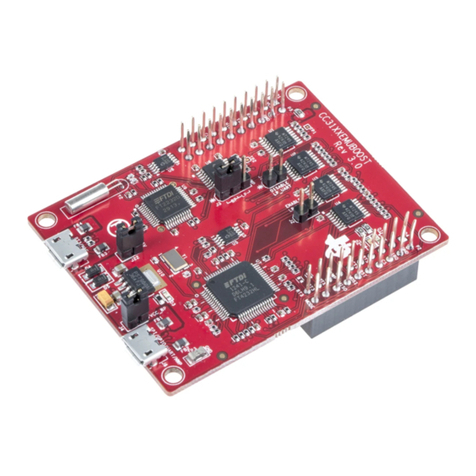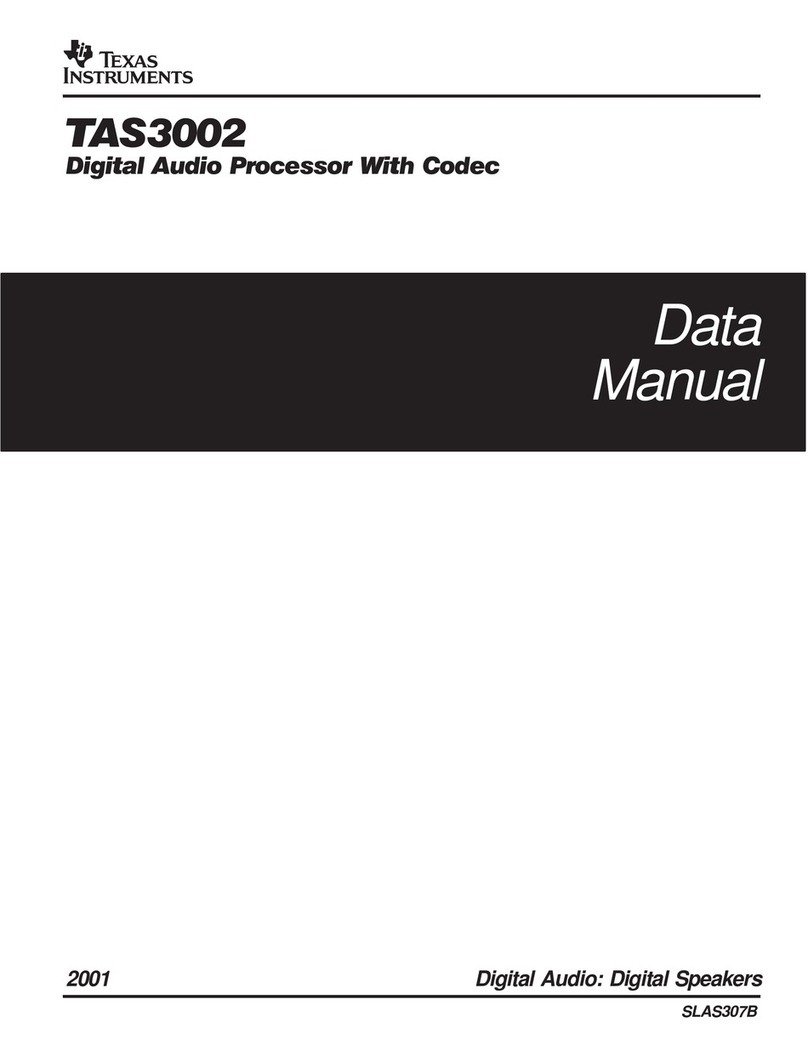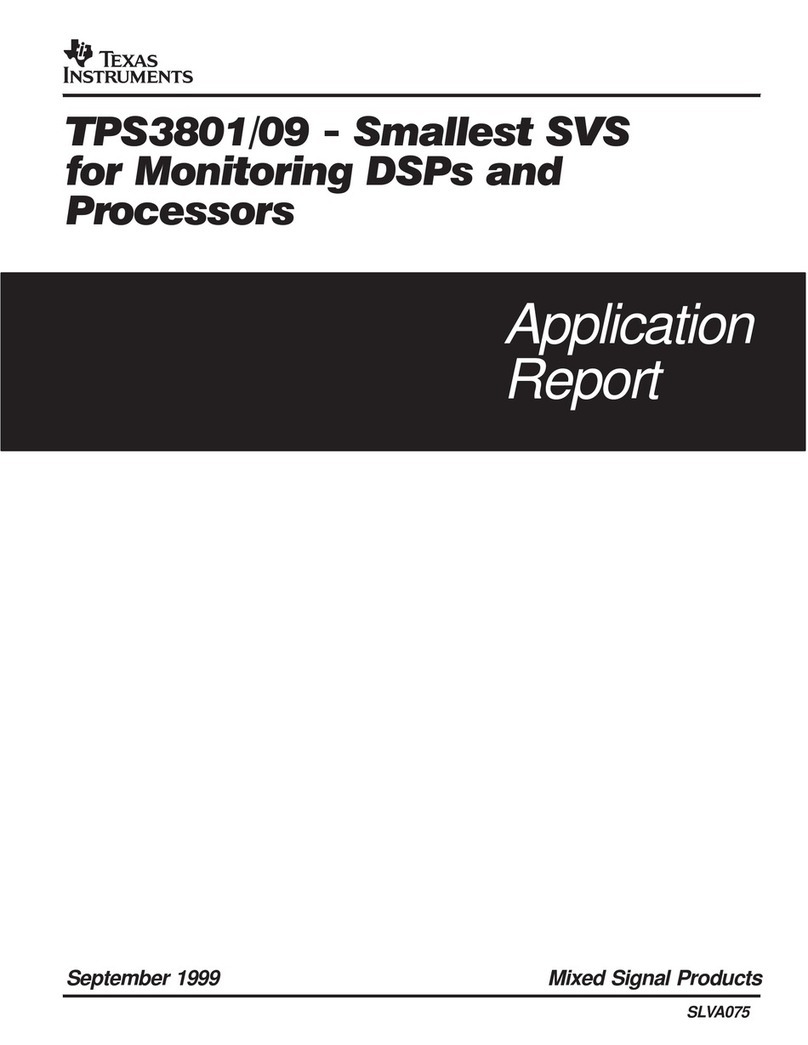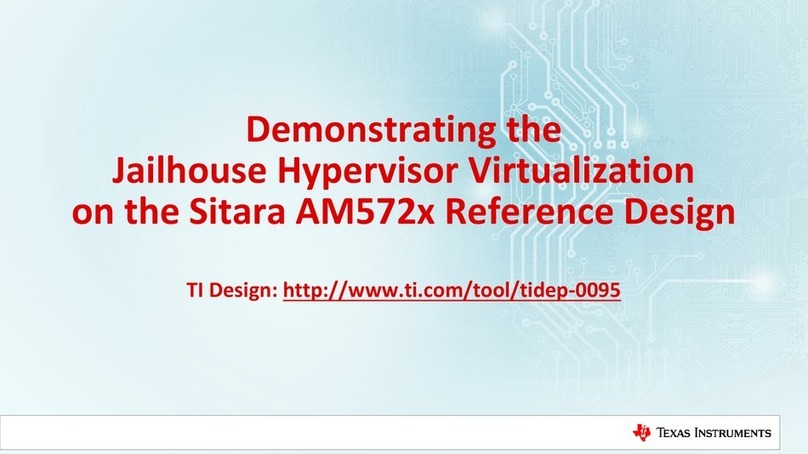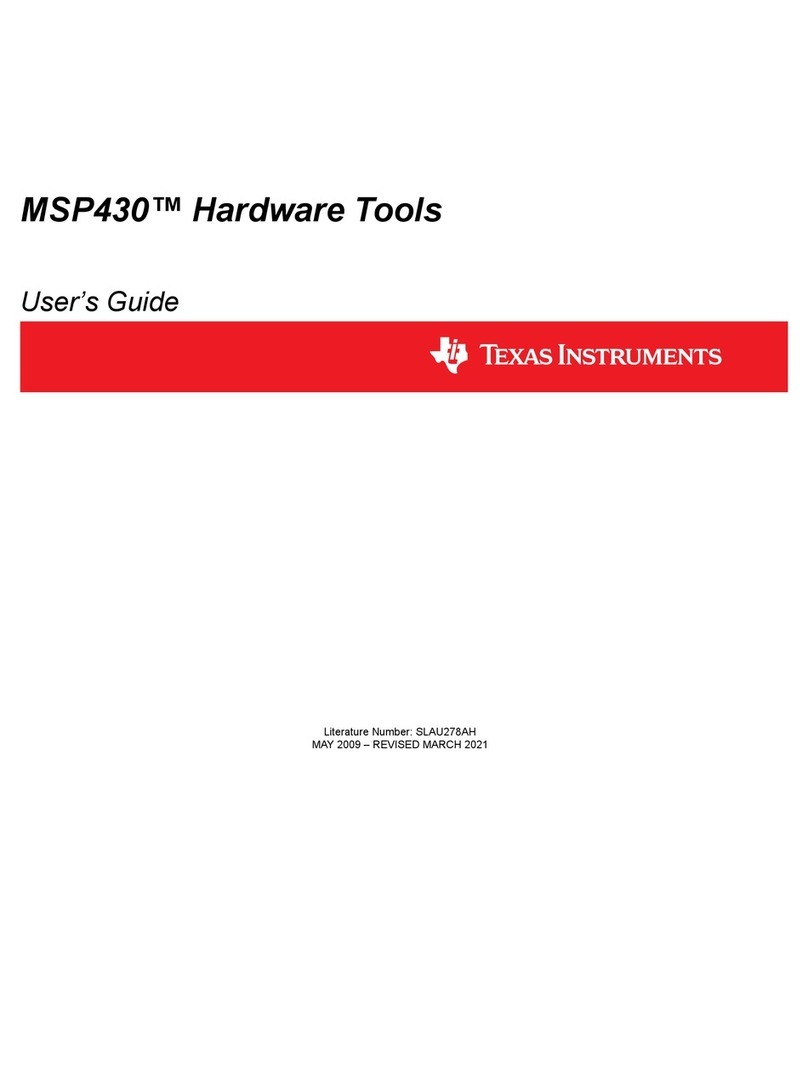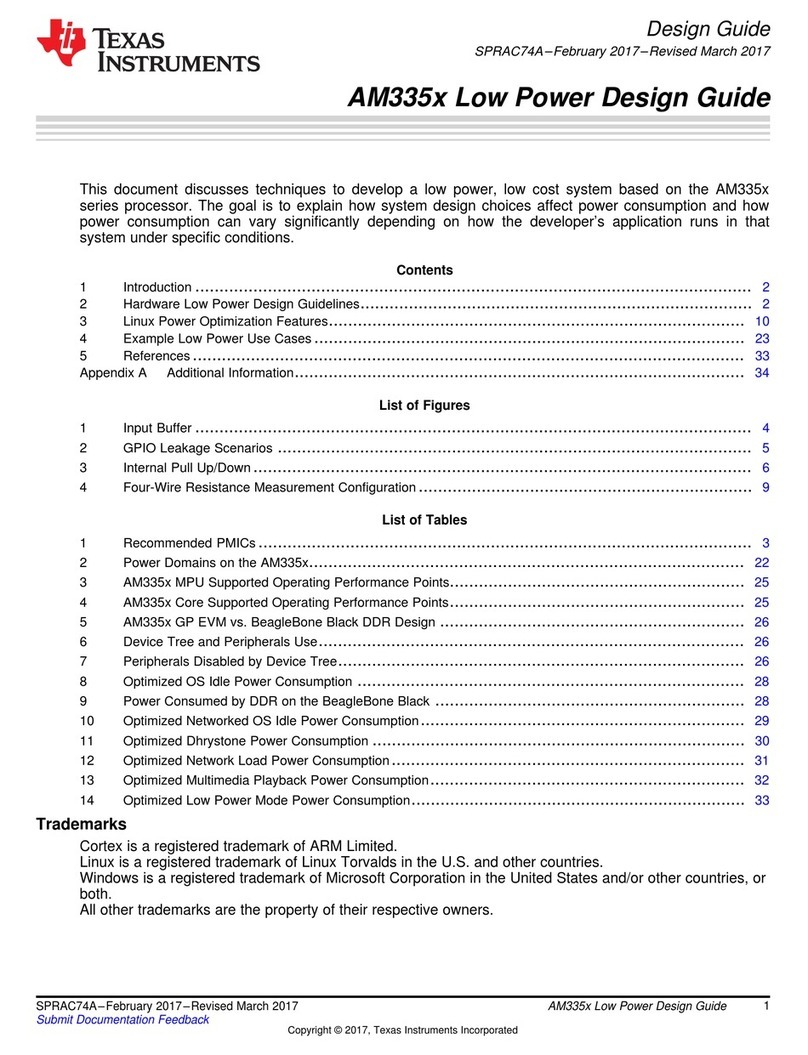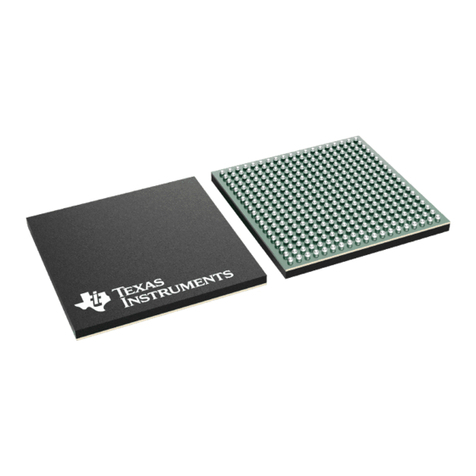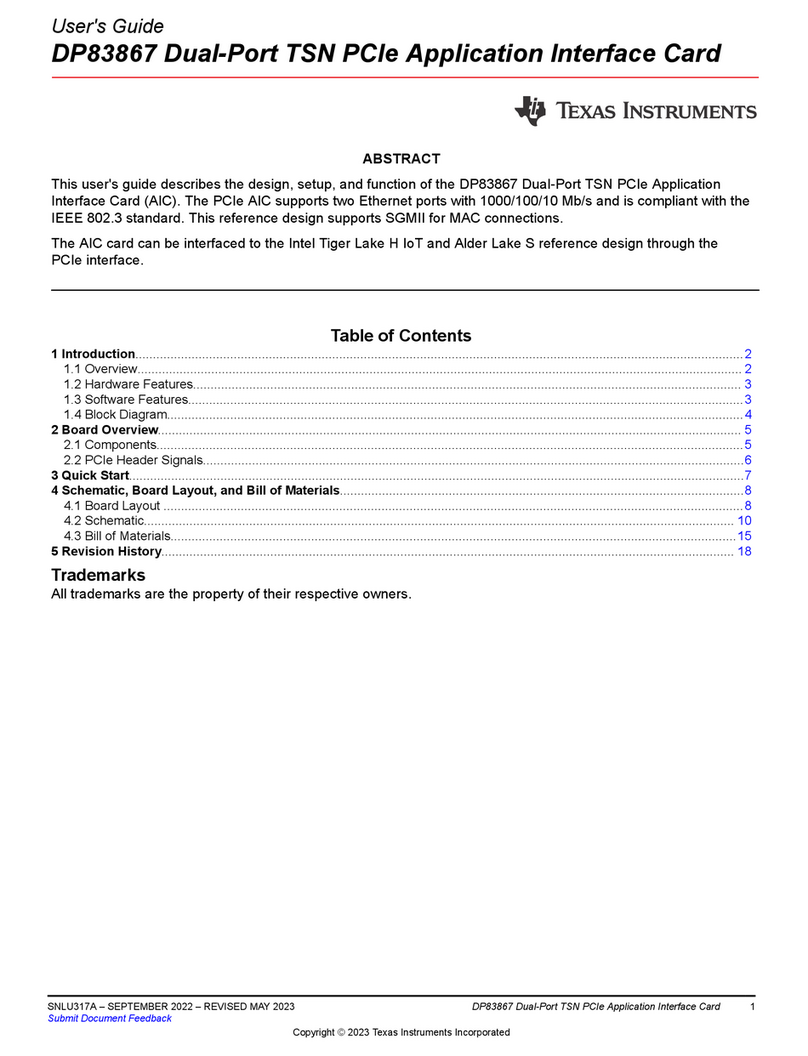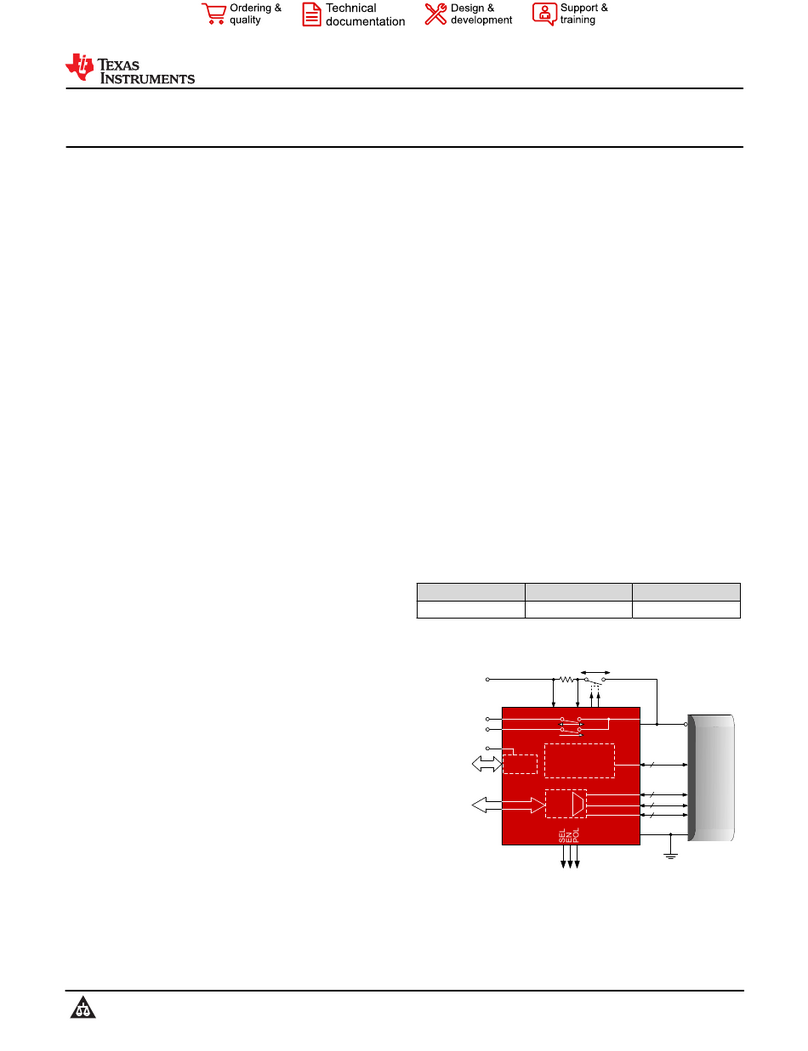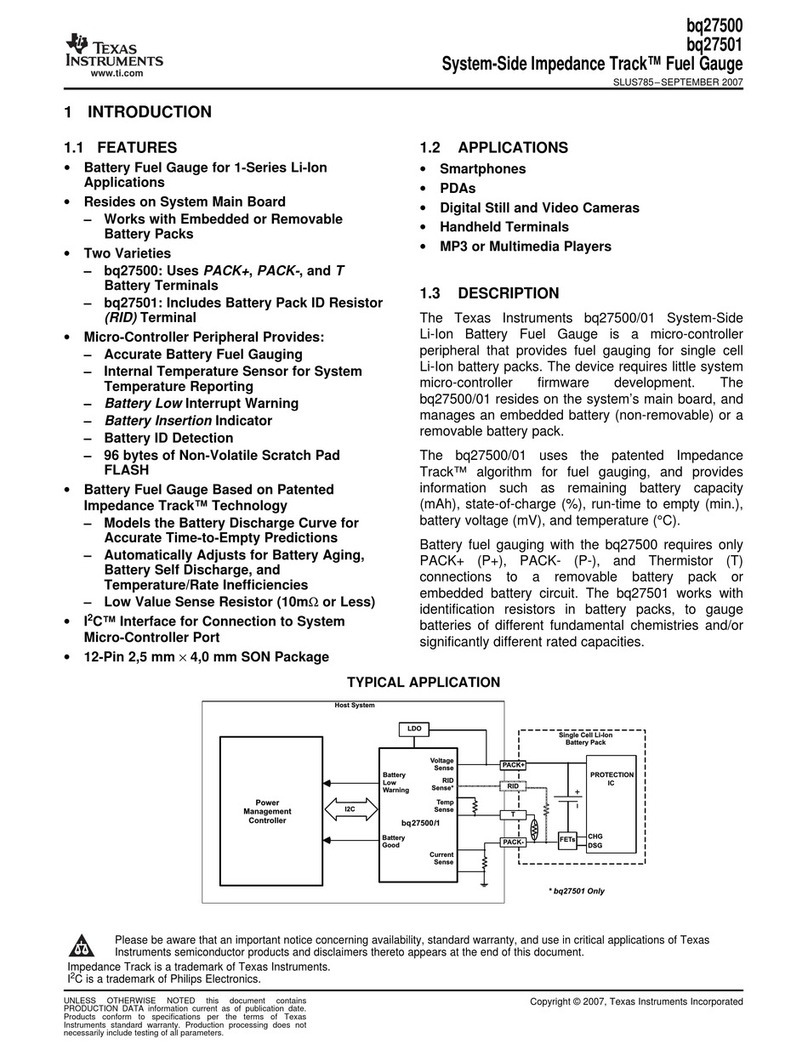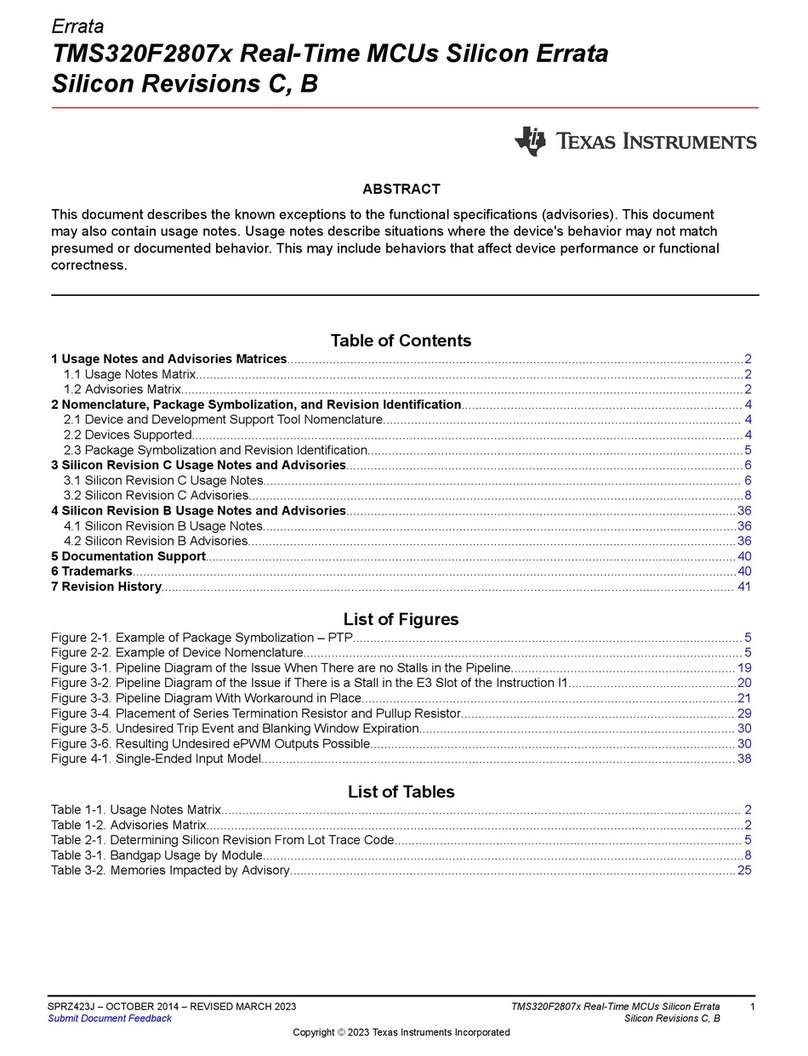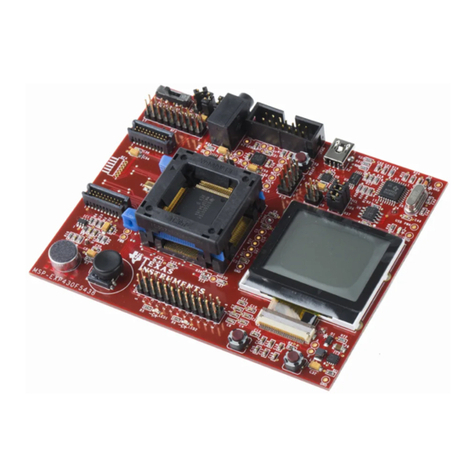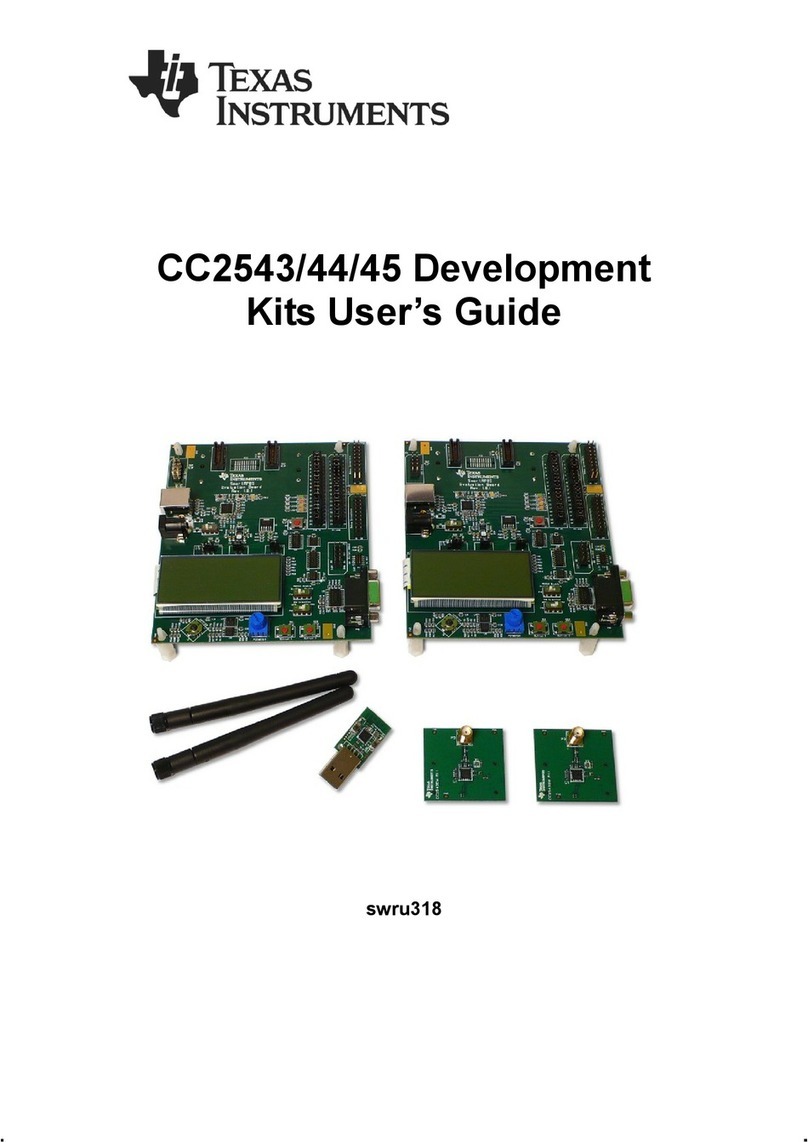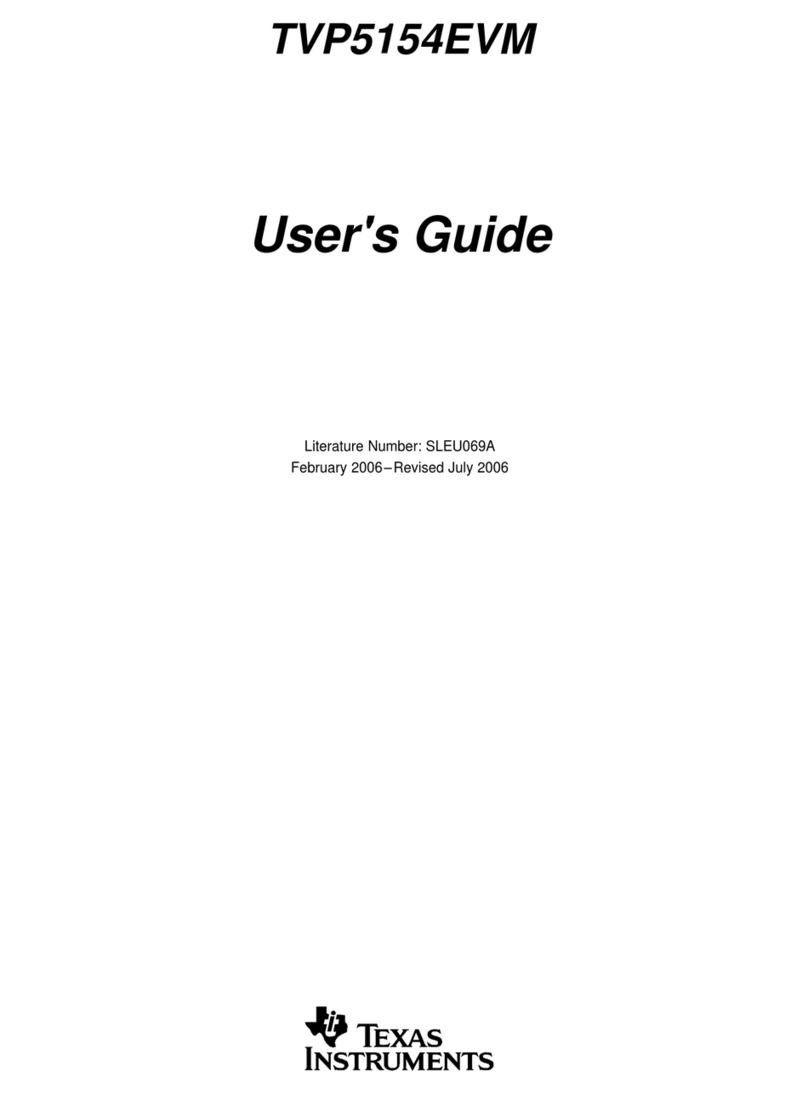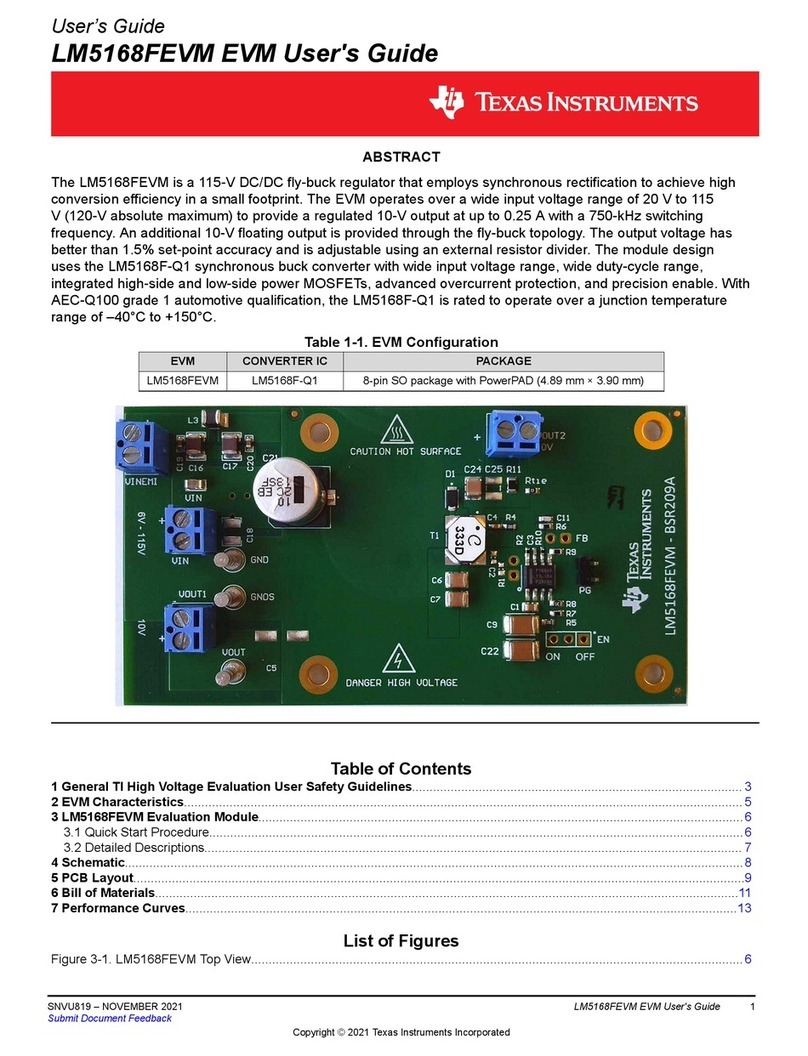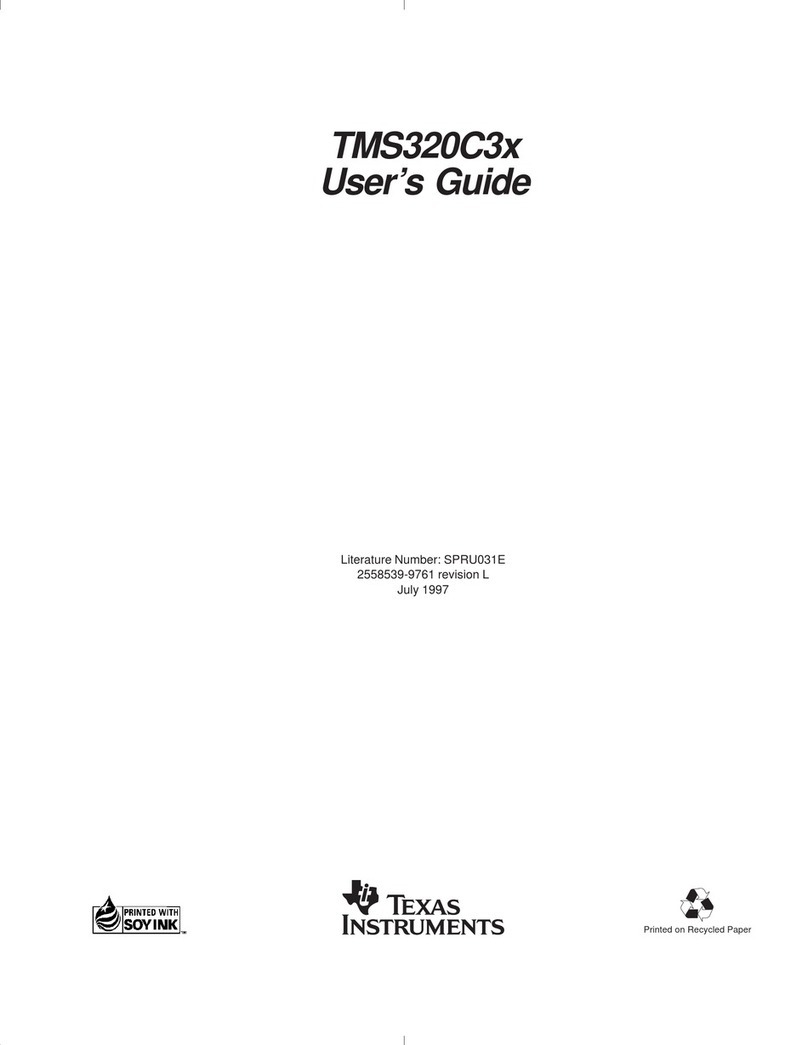
Table 2-2. EVM Power Supply Options
EVM Option Evaluation Goal Jumper Changes Required Voltage on J16 Comments
1 Evaluate ADC
performance using
a switching power
supply (TP62562)
JP13 → 1-2; JP14 → 1-2; JP17 → 1-2;
JP19 → 1-2;
3.3 V Maximum performance and
efficiency.
2 Evaluate ADC
performance using
a LDO-based
(TPS79618) solution.
JP13 → 1-2; JP14 → 1-2; JP17 → 2-3;
JP19 → 2-3;
3.3 V Maximum performance.
3 Evaluate ADC
performance using
an isolated ADC
AVDD and DVDD for
current consumption
measurements
JP13 → 1.8V on 2-3; JP14 → 1.8V on 2-3;
JP17 → open3; JP19 → open;
3.3 V Isolated power supply
for current consumption
measurements
2.2.1.1 Power Supply Option 1
The 1.8-V rails for the ADC are generated by the TPS62562 switching regulator. The TPS62562 is a step-down
(buck) converter with an acceptable input range of up to 5.5 V. However, because other circuits on the EVM are
connected to the 3.3-V input rail, the input voltage to J16 must not exceed 3.6 V or damage to those ICs will
occur. This option complements the very low power consumption of the ADS4xxx/58B18EVM as the TPS62562
provides excellent power efficiency.
2.2.1.2 Power Supply Option 2
Option 2 supplies power to the 1.8-V analog and digital rails of the ADC by using the TPS79618. The
TPS79618 is a low-noise dropout regulator - the 1.5-V dropout voltage (3.3 V to 1.8 V) provides sufficient
headroom for maximum PSRR and ADC performance. However, it comes at the expense of higher system
power consumption.
2.2.1.3 Power Supply Option 3
Option 3 is used to evaluate ADC performance using an isolated AVDD and DVDD power supply for current-
consumption measurements. This option must be used with caution as reversing the power supply or connecting
to the wrong connector can result in damage to the EVM. One common usage of this option is to measure the
separate current consumption of the relative supplies under particular operating conditions. For this option, the
shunts on jumpers JP13 and JP14 are removed and the input power is supplied to the center post of the jumper.
For convenience, a ground post is provided next to the center post for header connections that contain power
and ground on 0.1-inch centers.
2.2.2 Clock Input
The clock can be supplied to the ADC in several ways. The default clocking option is to supply a single-ended
clock directly to the SMA connecter, J19, directly. This clock is converted to differential and AC coupled to
the ADC by transformer coupling. The clock input must be from a clean, low-jitter source and is commonly
filtered external to the board by a narrow bandpass filter. The clock amplitude is commonly set to about 1.5
V peak-to-peak, and the amplitude offset is not an issue due to the AC coupling of the clock input. The clock
source is commonly synchronized with the signal generator of the input frequency to keep the clock and IF
coherent for meaningful FFT analysis.
Alternatively, the clock may be supplied by an onboard VCXO and CDCE72010 clock buffer. The CDCE72010
clock buffer has been factory programmed to output a clock to the ADC that is 1/4 the rate of the onboard VCXO.
While using this clock option, a separate 20-MHz reference clock must be supplied to the CDCE72010 by way
of the clock input SMA connector J19. From the CDCE72010, two clocking options to the ADC are possible. A
differential LVPECL clock output may be connected to the ADC clock input or a single-ended CMOS clock from
the CDCE72010 may be routed to the ADC transformer-coupled clock input through an onboard crystal filter. For
better performance, selecting the CMOS clock through a crystal output is recommended. Prior to making any
jumper settings and resistor changes, see the schematic located on the TI Web site in the relevant ADS41xx or
ADS41Bxx product folder. Table 2-4 displays the various clock option settings. The VCXO and crystal filter do
not come populated on the EVM by default, although the CDCE72010 clock buffer is installed.
www.ti.com Circuit Description
SLWU067D – NOVEMBER 2009 – REVISED MARCH 2022
Submit Document Feedback
ADS41xx/58B18EVM 7
Copyright © 2022 Texas Instruments Incorporated
